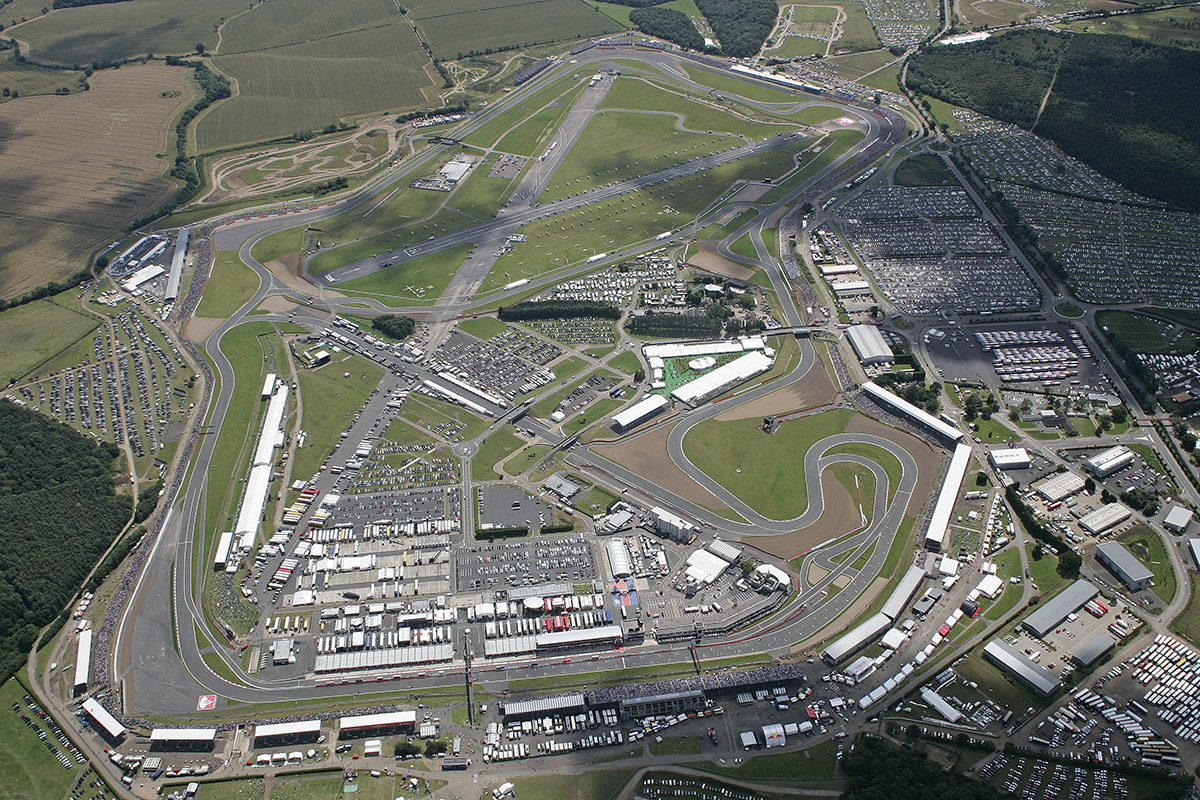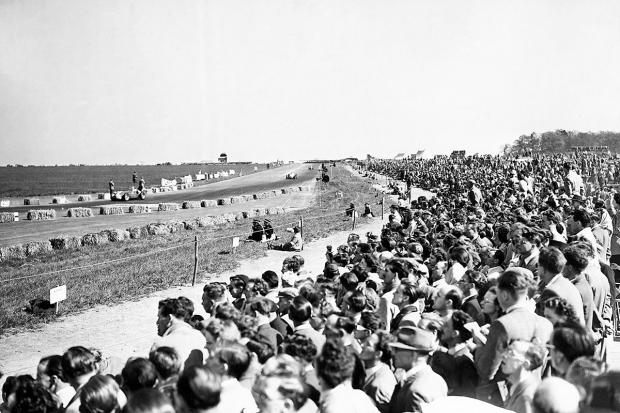
Of the current Formula One circuits, only Monza and Spa boast longer histories than Silverstone. As with Goodwood, Snetterton and Castle Combe, the Northamptonshire track was one of those to be born in the post-war boom during which airfields were converted for motor-racing use.
From 1948 onwards, it has been a constant presence and provided many enthusiasts with their first experience of major meetings, whether at the British Grand Prix or at one of the many sports-car, saloon-car or motorcycle fixtures.
After experimenting with using the runways, organisers settled on a layout that employed the perimeter road, and it would remain largely unchanged until 1990. Anyone who saw Nigel Mansell take pole position for that year’s Grand Prix will miss the awe-inspiring old Stowe and Club corners – to say nothing of those who saw Woodcote in its original, pre-1973 form – but the alterations have kept the circuit relevant for modern use and secured a long-term home for the British Grand Prix.
Here we take a look at how the famous venue has developed over the years.
The first Grand Prix held at Silverstone took place in 1948. Organised at very short notice, it attracted a strong entry mostly thanks to the influence of former racer Lord Howe, who helped to put it all together. The circuit layout made use of the airfield’s runways as well as its perimeter road, as shown here by the Maseratis of Alberto Ascari and Luigi Villoresi. The latter would go on to take victory.
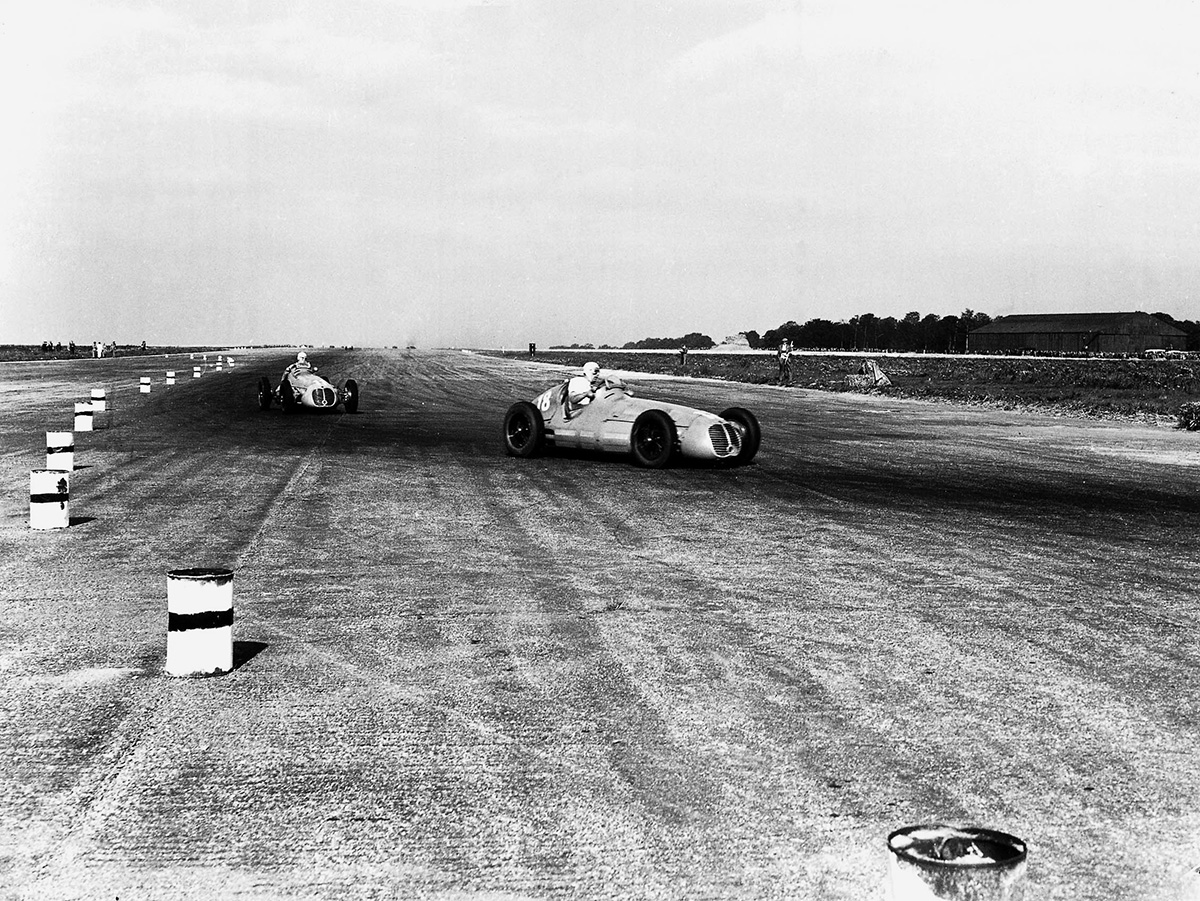
In 1950, Silverstone hosted the first World Championship Grand Prix, and it was a royal occasion. King George VI was in attendance to see Giuseppe Farina win for the all-conquering Alfa Romeo team, the Italian ace going on to win that year’s title. As can be seen, the pits at that time were situated between Abbey and Woodcote, and the crowd protected by some straw bales.
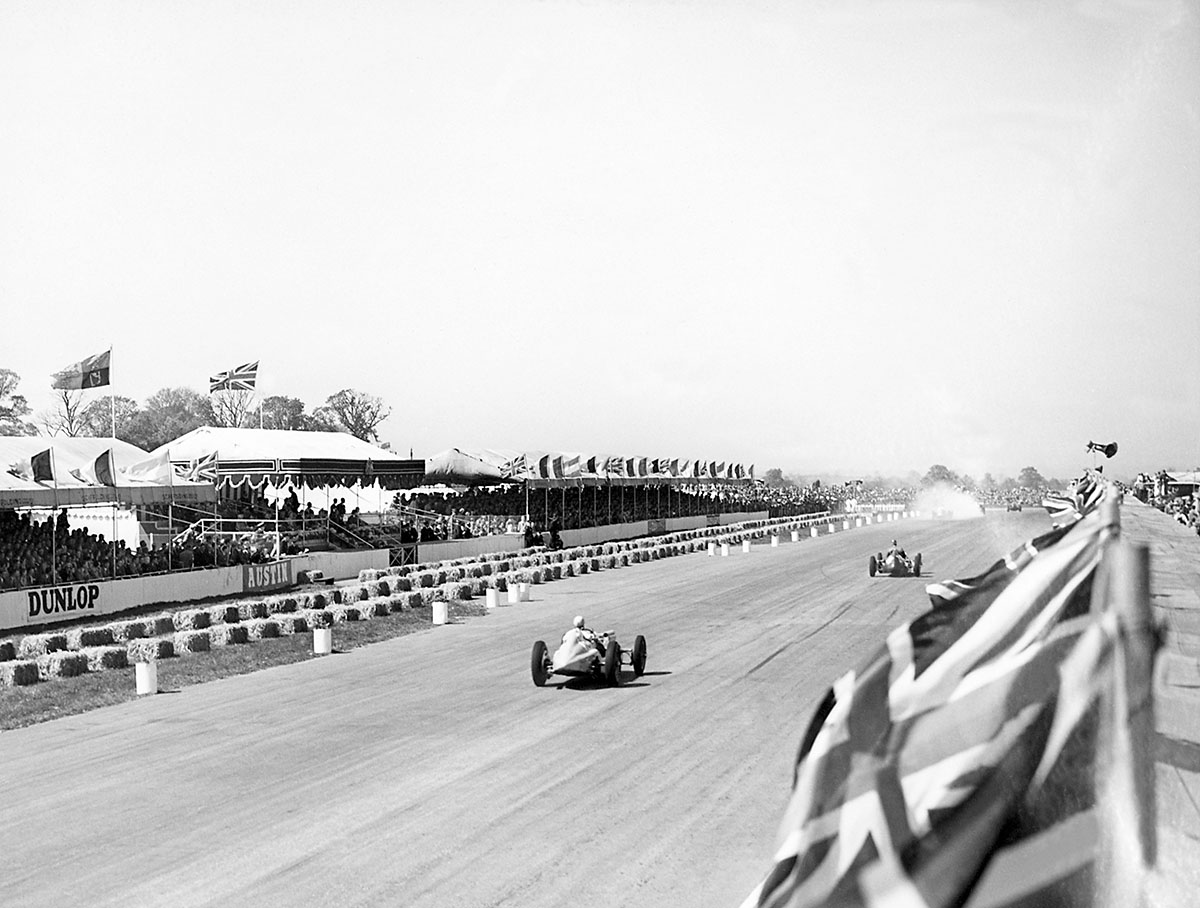
When Mercedes returned to Grand Prix racing in 1954, it looked as if they’d sweep all before them. And so they would – but not at Silverstone. Even the great Juan Manuel Fangio struggled to the place the streamlined W196 through its fast sweeps. Froilan Gonzalez won for Ferrari, while his compatriot came fourth after repeatedly clouting the oil drums that marked Silverstone’s corners.
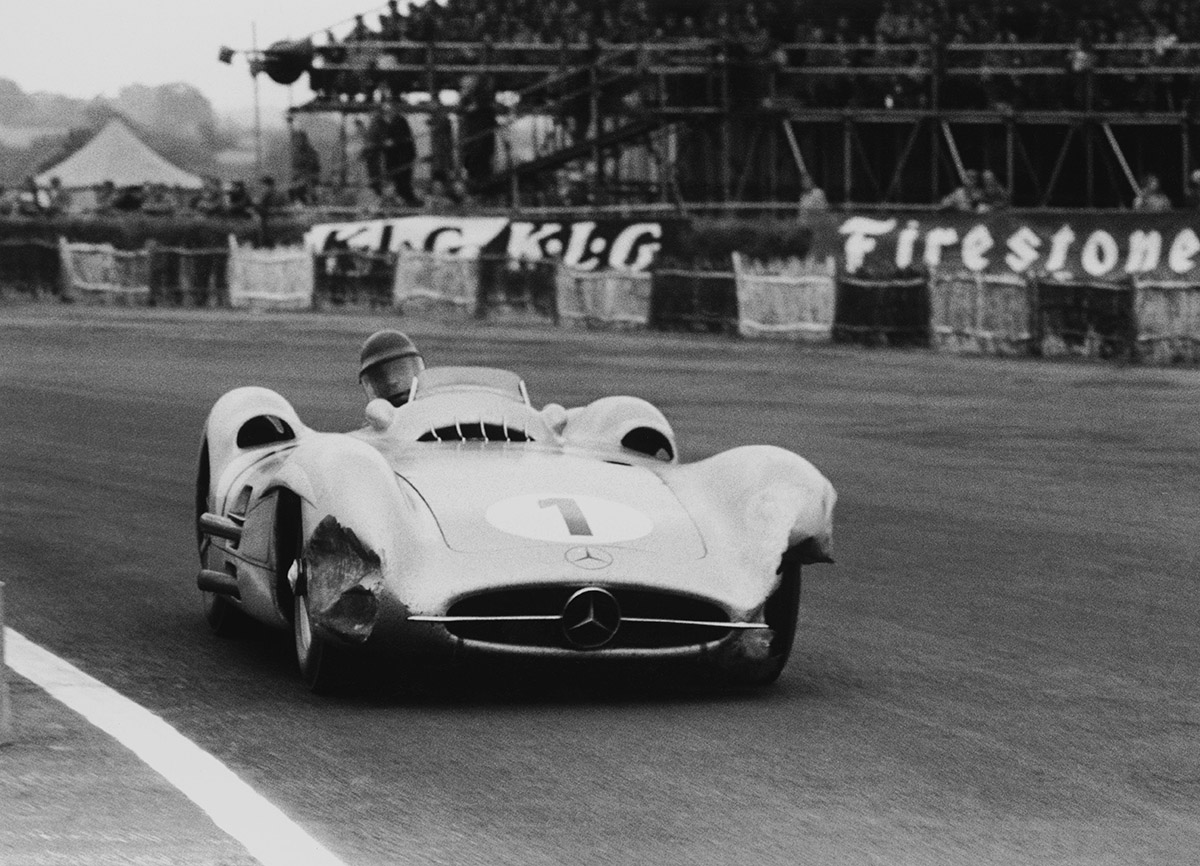
The International Trophy meeting was long a highlight in Silverstone’s calender. In 1960, the support programme included a saloon-car encounter that pitched Stirling Moss’s Equipe Endeavour Jaguar against the Coombs car of Roy Salvadori. The two aces went at it hammer and tongs, as proven by this shot of them pressing on through Copse. ‘Salvo’ came out on top after setting an 89mph fastest lap that was almost 1 sec quicker than Moss’ best.
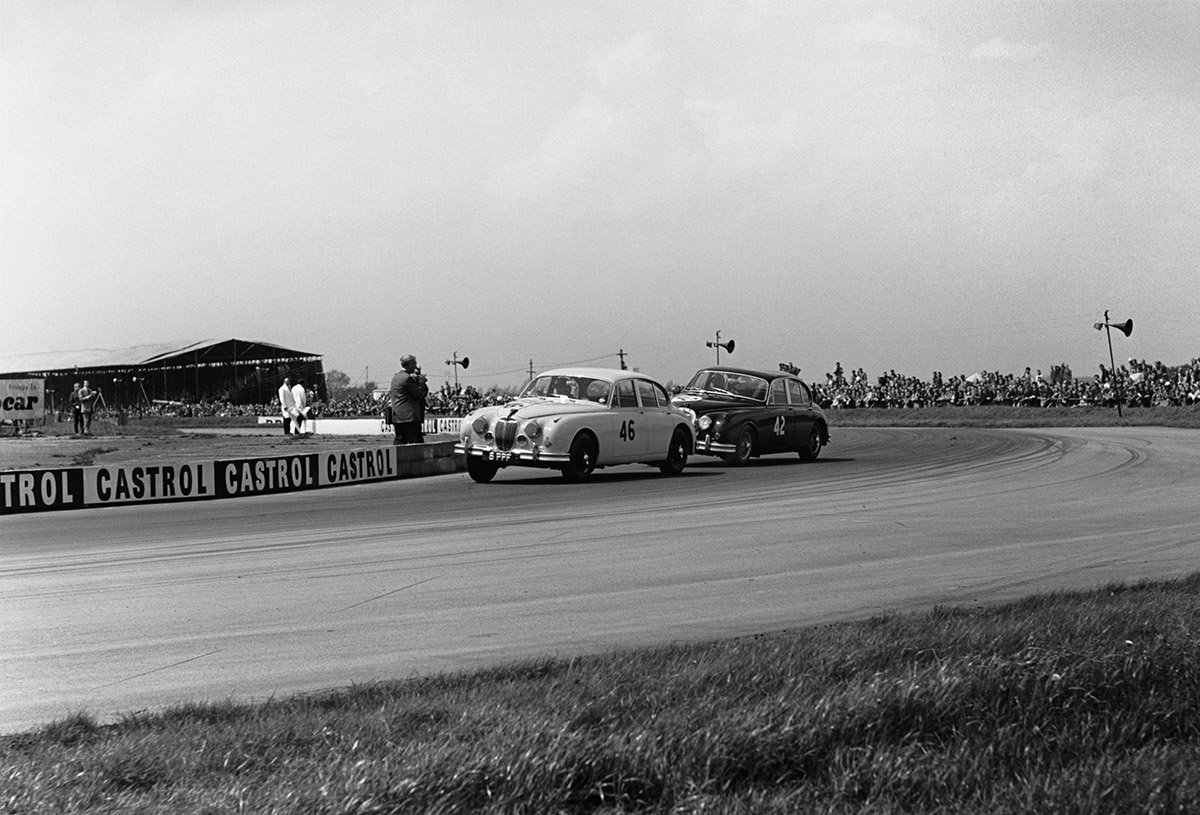
Jim Clark won the British Grand Prix three times at Silverstone, but the legendary Scot was just as at home there in a Lotus Cortina. Here he is winning his class in the 1964 International Trophy saloon-car race, but story has it that, during testing, he once lapped the circuit with Colin Chapman spread-eagled across the rear seat in an attempt to interpret how the car was handling.
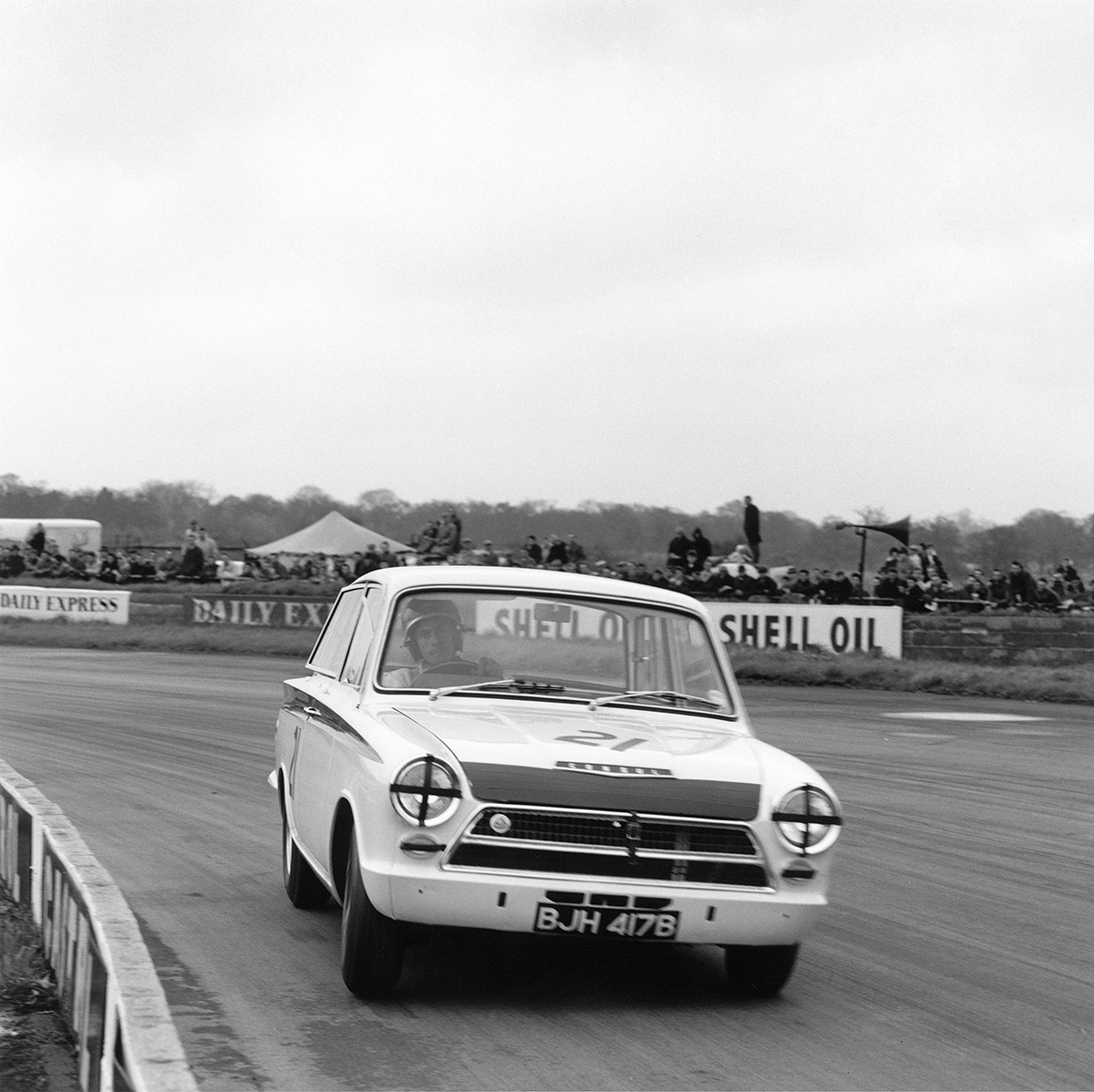
Relocating the pitlane to the straight between Woodcote and Copse presented one problem - drivers who lost it coming out of the former could quite easily end up hitting people in the unprotected pits. For many years, the answer was this distinctive raised pitlane. Here, in 1967, Jochen Rindt prepares to go out in his Cooper with mechanic Ron Dennis – now boss of McLaren – standing to attention behind the rear wheel. A helmetless Chris Amon, meanwhile, burbles past in his Ferrari.
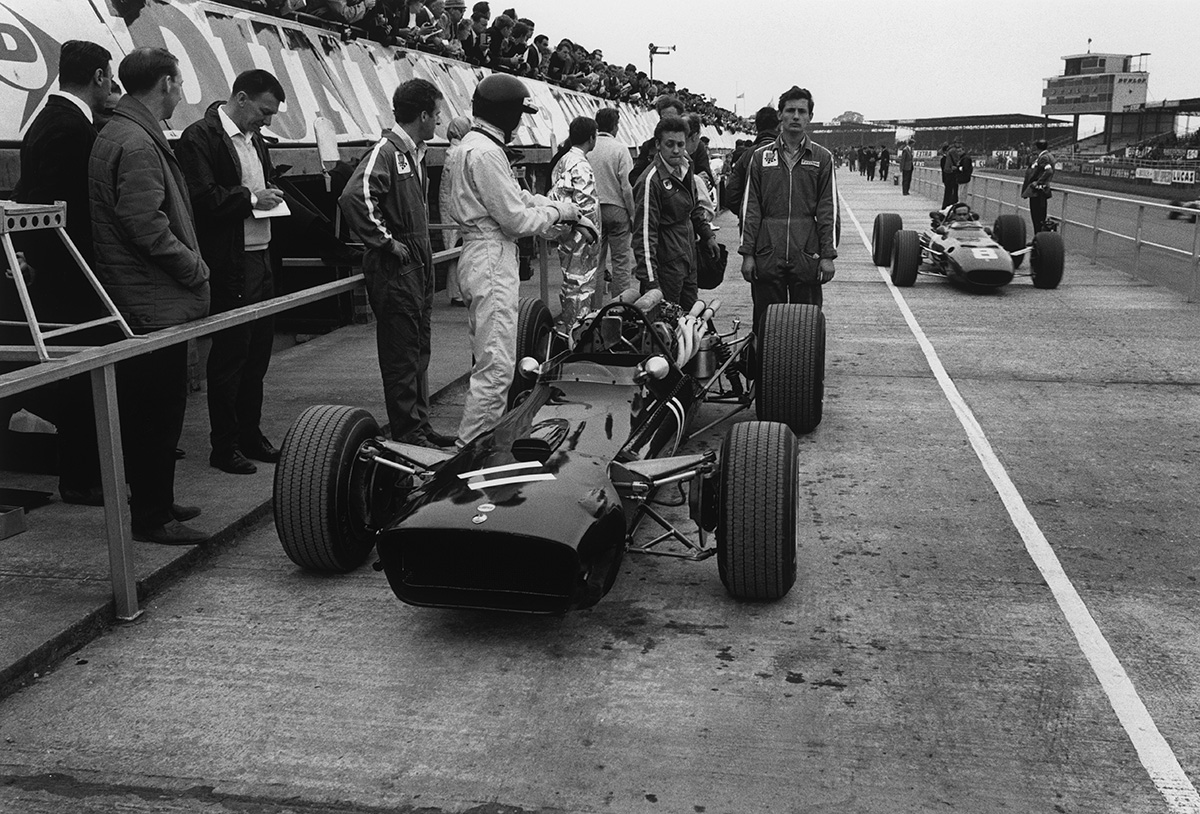
Following a multiple accident at Woodcote during the 1973 British Grand Prix, a chicane was inserted at the famous right-hander. Until then, it had a place to watch the greats and hold your breath as they teetered through almost flat-out. Whether it was Frank Gardner in a Chevrolet Camaro or, as here, Ronnie Peterson in a Lotus 72, Woodcote was truly a corner that separated the men from the boys.
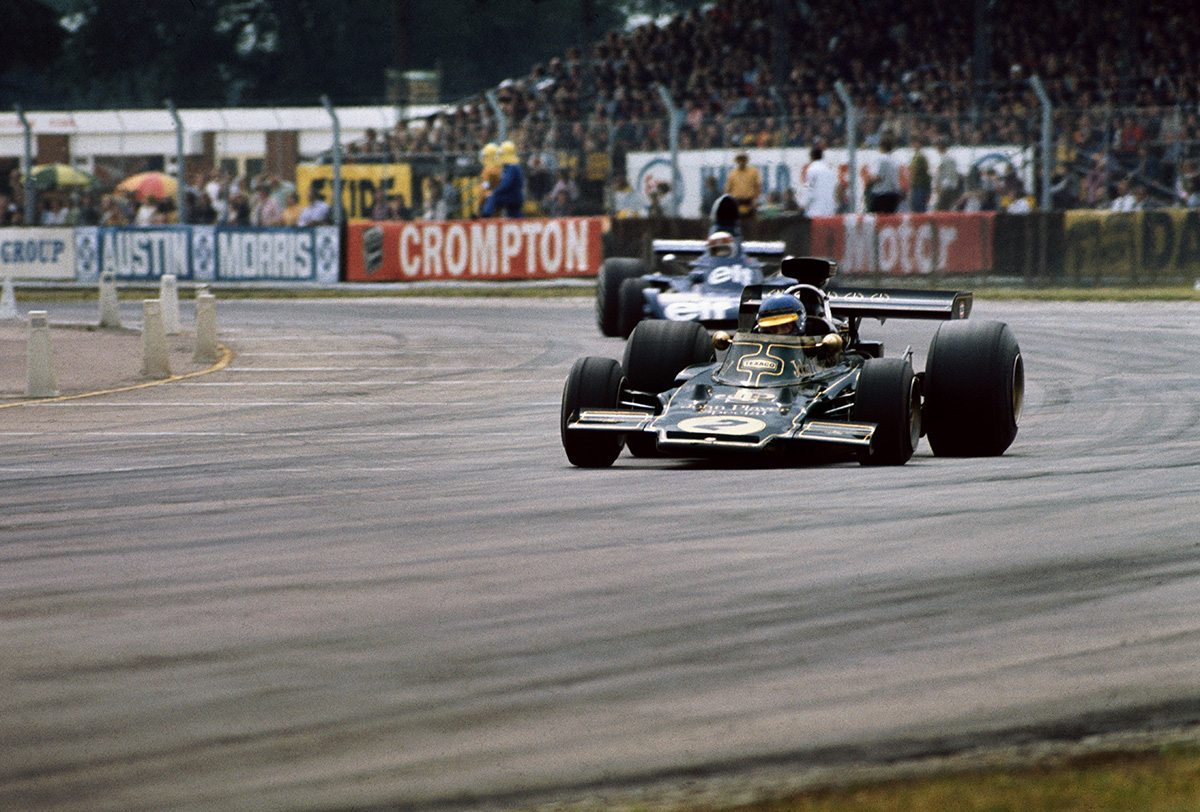
Despite the addition of the chicane at Woodcote, Silverstone remained fearsomely quick. In 1985, at the height of the turbo era, all eyes were on the stopwatches to see if somebody could break the 160mph barrier during practice for the British Grand Prix. Nelson Piquet, Alain Prost and Ayrton Senna came close, but then out went Keke Rosberg. The Flying Finn flashed round the 2.932 miles in 1 min 5.591 secs – an average of 160.9mph and for 17 years Formula One’s fastest lap. Afterwards, it was discovered that his Williams had a slow puncture…
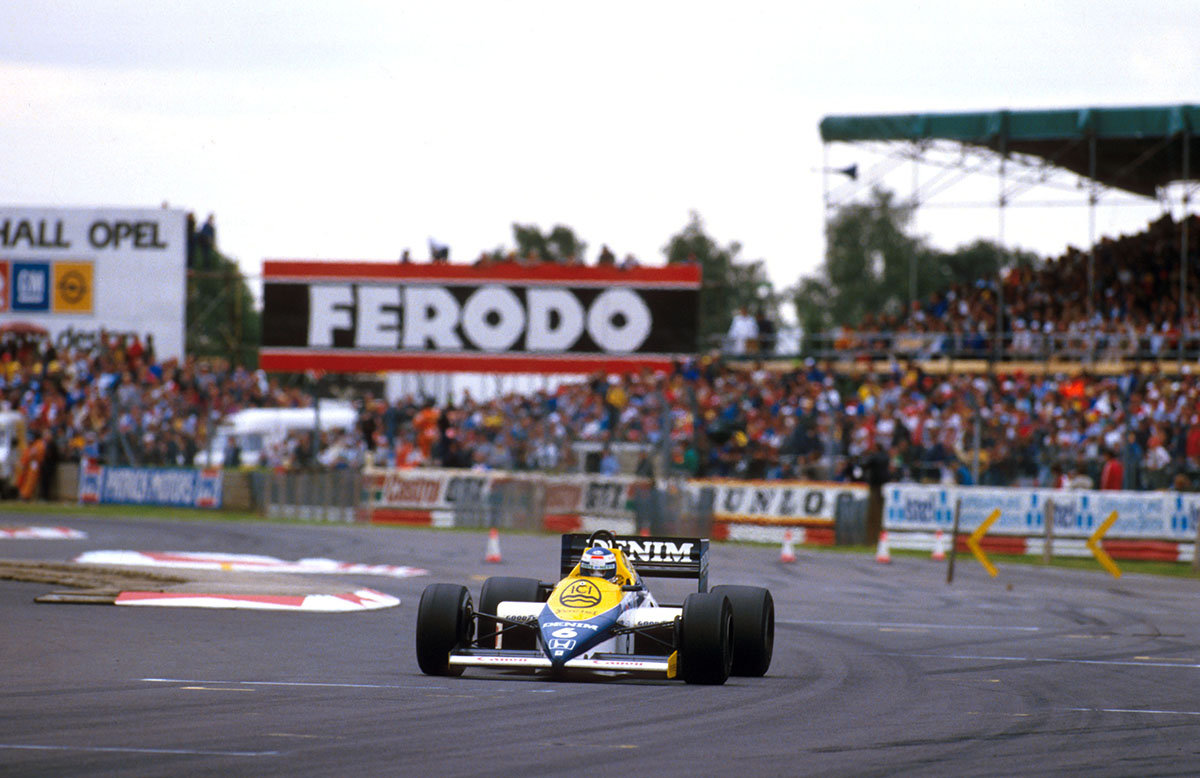
During the late 1980s and early 90s, Silverstone was Nigel Mansell’s own personal fiefdom. In ’87, he staged a stirring fightback following a pitstop, making up almost 30 seconds on his team-mate Nelson Piquet in only 28 laps. To the delight of the capacity crowd, whose cheers could be heard over the engines, he sold Piquet a dummy into the 150mph Stowe corner and squeezed past to take one of his finest victories.
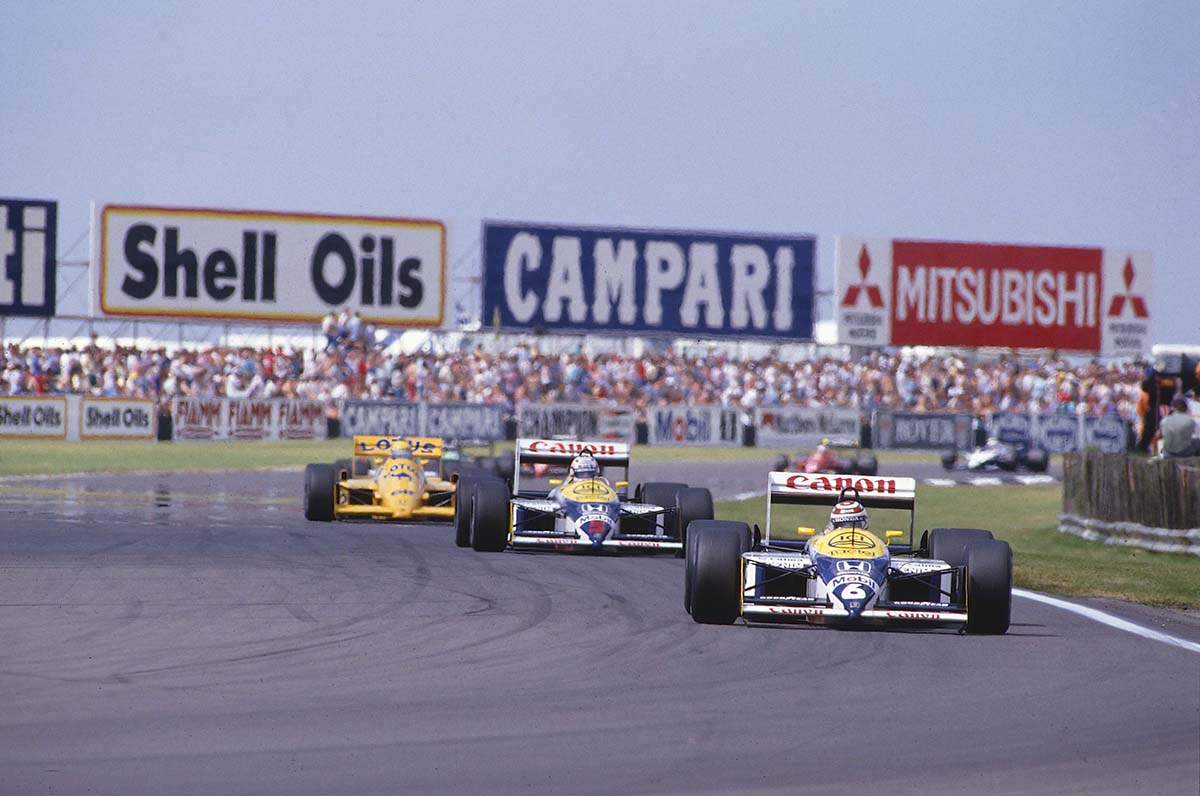
The first race for the new Group C formula was held at Silverstone in 1982, and by ’88 the category had distilled into a fight between Jaguar and Sauber-Mercedes – with the occasional interloping appearance from the works Porsches. In that year’s Silverstone 1000km, Martin Brundle and Eddie Cheever upheld British honour by coming out on top in their XJR-9 after an epic battle with the German cars. Here, the Jagaur leads the chasing Saubers out of the Woodcote chicane.
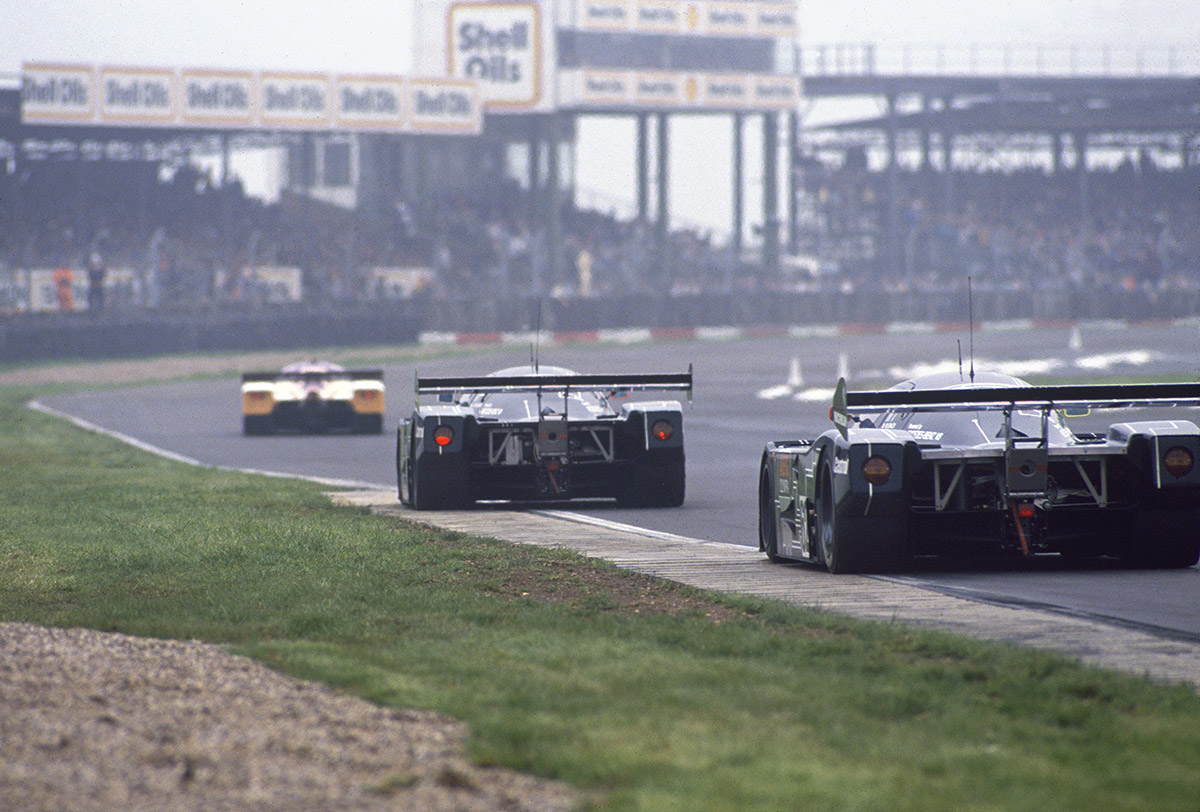
One of Silverstone’s most memorable Touring Car moments took place in 1992. John Cleland, who was trying to win the title, clashed with Steve Soper during the closing laps of the season’s final race. Soper’s BMW team-mate Tim Harvey took the crown, and the incident – which left Cleland livid and was shown live on the BBC – helped to propel the BTCC to enormous heights of popularity throughout the decade.
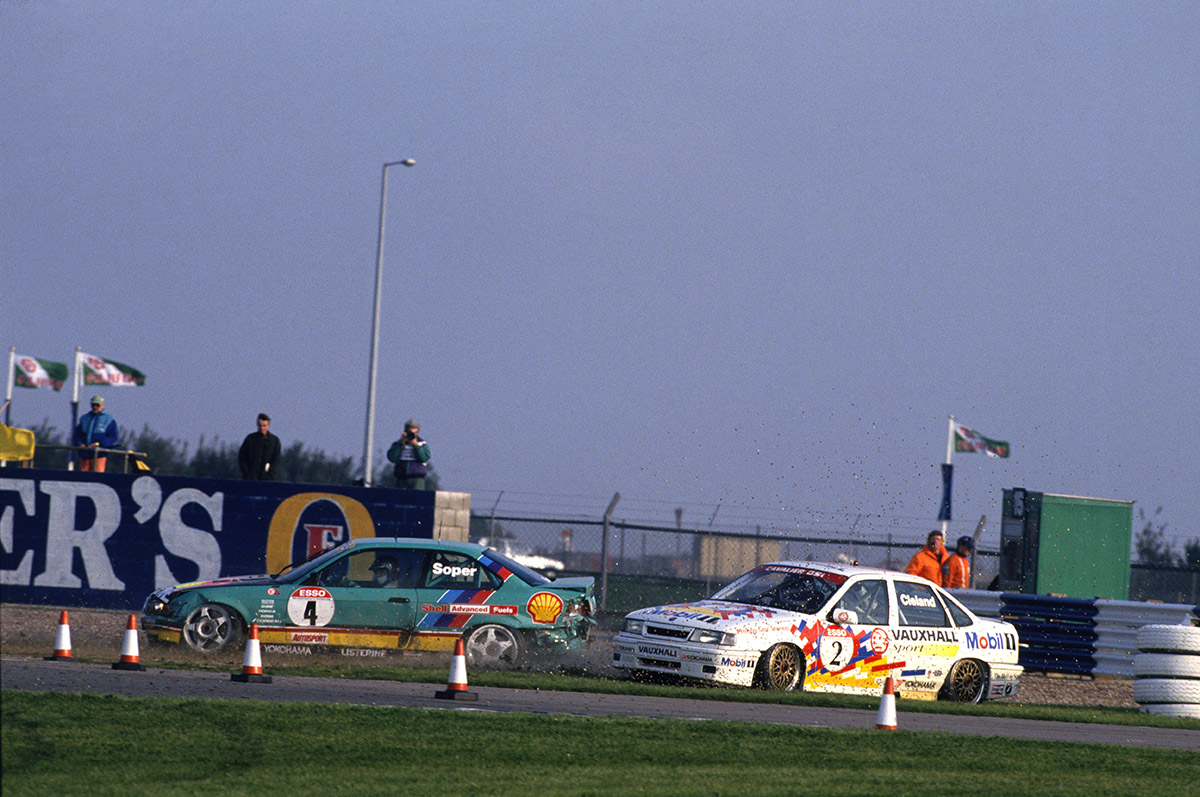
Before the most recent alterations to the Grand Prix layout, it was perfectly possible to trace Silverstone’s roots as an airfield. This 2007 shot shows it ahead of the Grand Prix, with the runways clearly visible and its wide-open spaces packed with the paraphernalia that comes with modern Formula One. The full Brands Hatch layout, in its entirety, would apparently fit into the ‘square’ that is roughly formed by Becketts, Abbey, Stowe and Club corners – ie, the top half of the circuit as you look at it here.
